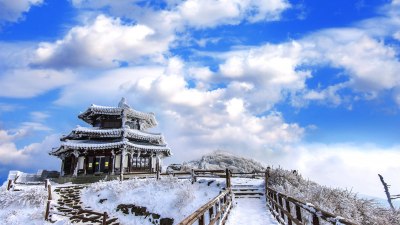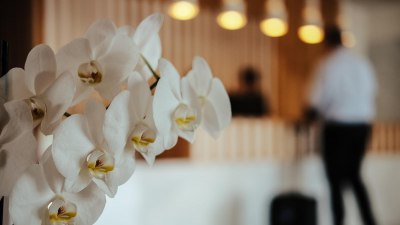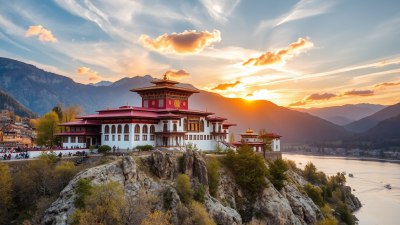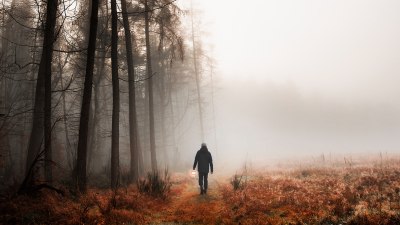The Magic of a Snowy Kyoto: Why Winter Is the Best Time to Visit
Discover why winter in Kyoto, adorned with snow, is a magical experience that enchants travelers.

Image by tawatchai07 on Freepik
When the world transforms into a winter wonderland, few places evoke magic like Kyoto, Japan. The city, renowned for its traditional wooden houses, historic temples, and serene gardens, takes on an enchanting quality when blanketed in snow. This article explores the allure of visiting Kyoto in the winter season, highlighting the sights, experiences, and unique charm that make it the best time to explore this ancient city.
The Tranquility of Winter
The winter months in Kyoto, particularly from December through February, bring a striking tranquility to the city. As the tourist crowds thin out and the usual hustle and bustle subsides, visitors can enjoy the serene beauty of the city in peace. The snow-capped roofs of temples and the stillness of the surrounding nature create a picturesque setting that invites contemplation and appreciation for the slower pace of life. This quiet ambiance offers a chance to reflect, connect with oneself, or simply enjoy nature's beauty.
The Beauty of Snow-Covered Temples
Kyoto's temples are breathtaking year-round, but when dusted with snow, they become ethereal. Some of the most iconic sites, such as Kinkaku-ji, the Golden Pavilion, and Ginkaku-ji, the Silver Pavilion, take on a dreamlike quality in the winter landscape. The contrast between the shimmering golden and silver structures and the pure white snow creates a stunning visual spectacle that photographers crave. Additionally, the tranquility of these sites in winter means fewer distractions, allowing visitors to fully immerse themselves in the beauty and history of these sacred spaces.
Winter Festivals and Events
Winter in Kyoto is also a time for unique cultural experiences. The city hosts various festivals that celebrate the season. One of the most notable is the Arashiyama Hanatoro, held in mid-December, where thousands of lanterns illuminate the famous bamboo grove and temples, creating a magical evening atmosphere. Another enchantment is the Yohkō-shinji, showcasing stunning winter illuminations and light displays across the city. Experiencing these festivals allows visitors to witness the local culture and traditions in a way that is distinct from the summer months.
Kyoto’s Cozy Tea Houses
No visit to Kyoto would be complete without indulging in a warm cup of tea. The winter months are perfect for seeking refuge in one of the city’s traditional tea houses. Curl up in a cozy setting and enjoy matcha (powdered green tea) or a steaming bowl of local varieties while looking out at a snow-dusted garden. The warmth and hospitality of the tea masters add to the experience, making it not just a drink but a cultural journey. Many tea houses offer seasonal treats that pair beautifully with the tea, showcasing local culinary traditions.
The Taste of Winter Cuisine
Winter is also a time of culinary delight in Kyoto, where seasonal ingredients come together to create warming dishes that nourish both body and spirit. This is the season for nabe, a hot pot dish filled with various ingredients like tofu, vegetables, and seafood simmered in a rich broth. Many restaurants in Kyoto offer nabe prepared in traditional styles, and experiencing this meal can be a comforting way to warm up on a chilly winter day. Additionally, winter specialties like yudofu (tofu hot pot) and seasonal sweets provide a taste of Kyoto that is intimately tied to its cultural and natural environment.
Strolling Through the Snow
Walking through the streets of Kyoto when it is draped in snow is an experience like no other. The city’s bamboo groves, gardens, and ancient stone paths take on a magical quality during winter. A stroll through the Arashiyama Bamboo Grove can feel especially serene with the soft crunch of snow underfoot and the gentle whisper of the bamboo swaying in the wind. The iconic cherry blossoms may be absent, but winter’s pristine beauty brings a unique charm to the landscape that is equally captivating.
Enjoying Winter Activities
While Kyoto may not have the ski slopes that some regions of Japan do, there are still plenty of winter activities to enjoy. Visitors can engage in ice skating at temporary rinks or participate in traditional winter sports like snowshoeing in nearby regions. For those interested in cultural pursuits, taking part in a winter kimono wearing experience is exceedingly popular. Wandering through the picturesque streets adorned in traditional attire offers a unique perspective on the city’s history and culture.
Visiting the Nearby Ski Resorts
If skiing or snowboarding is on your agenda, Kyoto’s location provides easy access to several ski resorts in the surrounding areas. Resorts like Nijo and Shiga Kogen are just a short train ride away and offer an excellent escape for those seeking winter adventure. Visitors can enjoy a day on the slopes and then return to the warmth and cultural richness of Kyoto for the evening. This combination of city exploration and outdoor adventure makes for a perfect winter getaway.
The Charm of Kyoto’s Roads
When snow covers the ancient pavements and roads of Kyoto, it enhances the charm of the city’s historic neighborhoods. Areas like Gion and Higashiyama, where traditional wooden machiya houses line the streets, look exceptionally beautiful under a blanket of white. The snow softens the edges and exudes warmth; while walking these historical apses, visitors may happen upon local artisans or shops, giving them a deeper connection to Kyoto's culture. The snowy surroundings tend to make each moment feel more cinematic, as if wandering through a scene from a film.
Capture the Moment
For photographers, winter in Kyoto offers a unique opportunity to capture stunning images free from crowds and lush greenery. The contrast of the old architecture against the crisp white snow creates a backdrop that is not just beautiful but also deeply evocative. Every corner presents another photo opportunity, from snow-covered temples to serene gardens. Early morning and late afternoon light during winter can provide beautiful golden hour shots, making it an ideal time for avid photographers to hone their craft.
Planning Your Winter Visit
To make the most of a winter trip to Kyoto, it’s essential to plan ahead. Consider timing your visit to coincide with local festivals or events for a richer experience. Accommodations can be more limited during peak winter months, so booking in advance is advisable. Whether seeking a luxury ryokan experience or a cozy guesthouse, there are options to suit every traveler’s needs. Layering clothing is also crucial, as temperatures can drop significantly, especially in the evenings. Embrace the winter chill and enjoy all that Kyoto has to offer during this quieter, more contemplative time.
Winter in Kyoto is nothing short of magical. The combination of snowy landscapes, tranquil temples, rich cultural experiences, delicious seasonal cuisine, and festive celebrations creates a unique atmosphere that simply cannot be experienced in the busier months. From the serene beauty of snow-covered gardens to the warmth of traditional tea houses, visiting Kyoto in winter opens a treasure trove of discoveries waiting to be explored. Embrace the magic of winter in Kyoto, where every moment feels like a step into a beautiful, serene painting.











